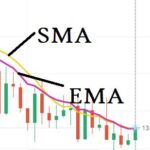Introduction
In technical analysis, trendlines and channels are essential tools for visualizing and trading market direction. They provide structure to price movements and help traders identify trends, entry points, and potential reversals. Understanding how to draw and interpret these tools can significantly improve your trading decisions and risk management.
This article will guide you through what trendlines and channels are, how to draw them correctly, and how to use them in real-world trading strategies.
What are Trendlines?
A trendline is a straight line that connects two or more price points on a chart and extends into the future to act as a line of support or resistance.
There are two primary types of trendlines:
1. Uptrend Line (Support)
- Drawn by connecting a series of higher lows
- Indicates a bullish market
- Acts as a support level
2. Downtrend Line (Resistance)
- Drawn by connecting a series of lower highs
- Indicates a bearish market
- Acts as a resistance level
Why Trendlines Matter
- Identify Market Direction: Clearly shows if the market is trending up, down, or sideways.
- Support/Resistance Reference: Helps traders spot bounce or breakout opportunities.
- Decision-Making Tool: Offers clear guidance for entering or exiting trades.
How to Draw Trendlines Correctly
To draw a valid trendline:
- Use at least two significant swing highs or lows:
- For an uptrend: Connect two or more higher lows
- For a downtrend: Connect two or more lower highs
- Extend the line to the right to project future potential support or resistance.
- Use higher timeframes for more reliable trendlines (1H, 4H, Daily).
- Avoid forcing trendlines: If the price doesn’t respect the line naturally, it’s not valid.
Trendline Breaks
A break of a trendline can signal:
- Trend reversal: If confirmed with volume and other tools
- Short-term correction: Before the trend resumes
To trade trendline breaks effectively:
- Wait for a confirmed candle close beyond the trendline
- Look for volume increase to support the breakout
- Consider a retest of the broken trendline before entering
What are Channels?
A price channel is formed when two parallel trendlines contain the price action within a rising, falling, or sideways structure.
Types of Channels:
- Ascending Channel (Bullish)
- Upper line: resistance (connects highs)
- Lower line: support (connects lows)
- Price moves upward within the channel
- Descending Channel (Bearish)
- Upper line: resistance
- Lower line: support
- Price moves downward
- Horizontal Channel (Range-bound Market)
- Price oscillates between two flat horizontal lines
- Indicates consolidation or indecision
How to Draw Channels
- Start with a valid trendline (support or resistance)
- Draw a parallel line on the opposite side of the price action
- Use the most recent high/low to anchor the second line
- Ensure price touches or respects both lines at least twice for reliability
How to Trade Using Trendlines and Channels
1. Bounce Trades
- Buy at the lower boundary of an ascending channel or uptrend line
- Sell at the upper boundary of a descending channel or downtrend line
- Use confirmation signals like candlestick patterns or RSI
2. Breakout Trades
- Enter when price breaks above or below a channel or trendline
- Confirm with volume and momentum indicators
- Place stop-loss just outside the channel to manage risk
3. Channel Reversals
- When price breaks out of a channel in the opposite direction, it may signal trend exhaustion
- Look for divergence on indicators like MACD or RSI for early warning
Trendlines vs. Channels: Key Differences
| Feature | Trendlines | Channels |
|---|---|---|
| Structure | Single line | Two parallel lines |
| Use | Show trend support/resistance | Show trend boundaries |
| Direction | Uptrend or downtrend | Upward, downward, or sideways |
| Trading Style | Breakout or bounce | Bounce and breakout inside range |
Best Practices When Using Trendlines and Channels
- Combine with indicators: Use RSI, MACD, or volume to confirm signals
- Stick to clean charts: Don’t clutter with too many lines
- Backtest: Practice drawing and using trendlines on historical charts
- Be flexible: Adjust lines as new highs/lows form
Common Mistakes to Avoid
- Forcing trendlines: Only draw lines where price clearly reacts
- Using short-term noise: Avoid tiny movements—look for swing points
- Ignoring breaks: A trendline break without confirmation can be a false signal
- Trading channels without confirmation: Always look for extra confirmation before entering
Conclusion
Trendlines and channels are simple yet powerful tools for identifying and trading trends. By drawing them correctly and using them in conjunction with other forms of analysis, traders can gain a better understanding of market behavior and develop a structured approach to trading.


